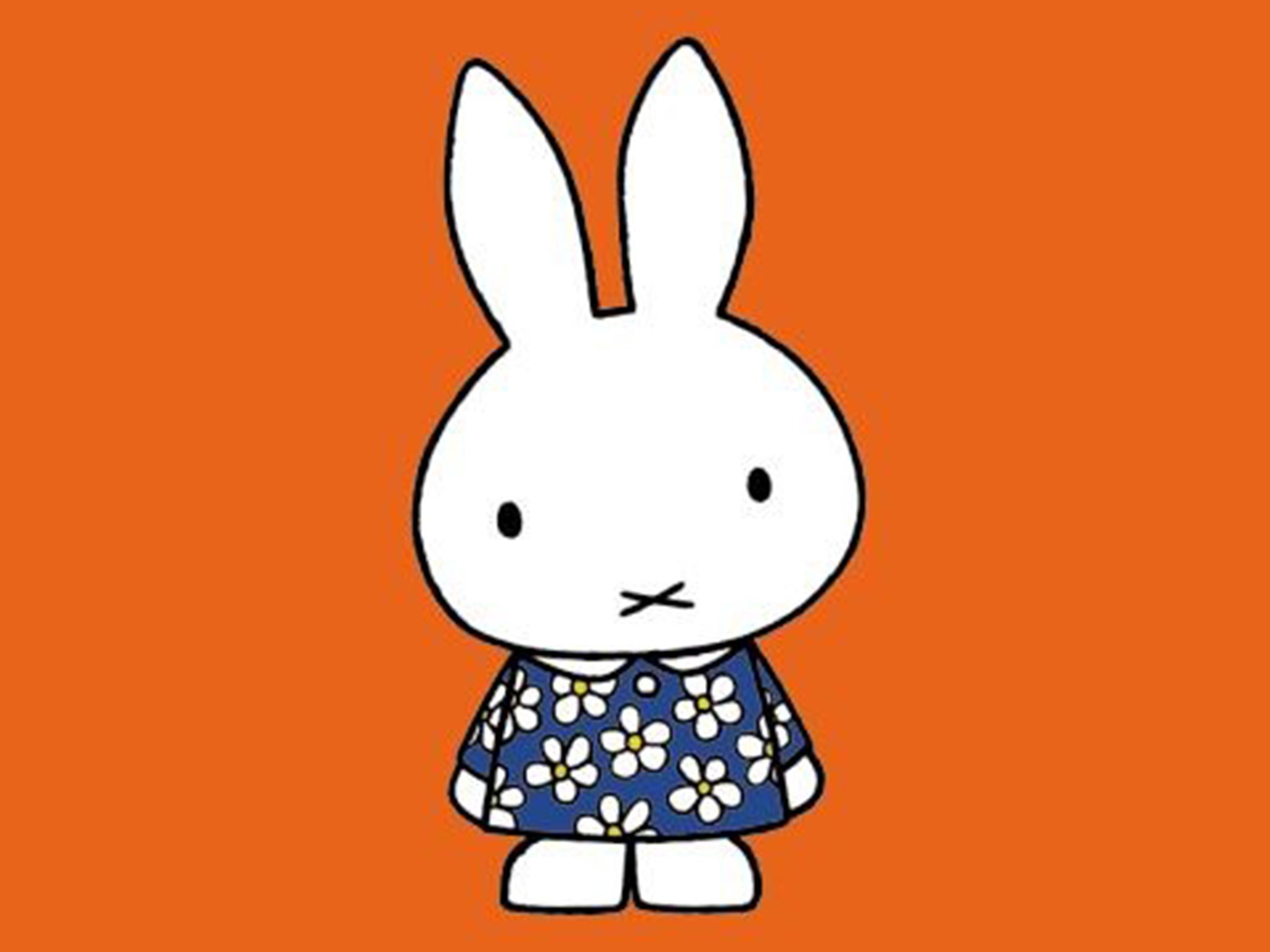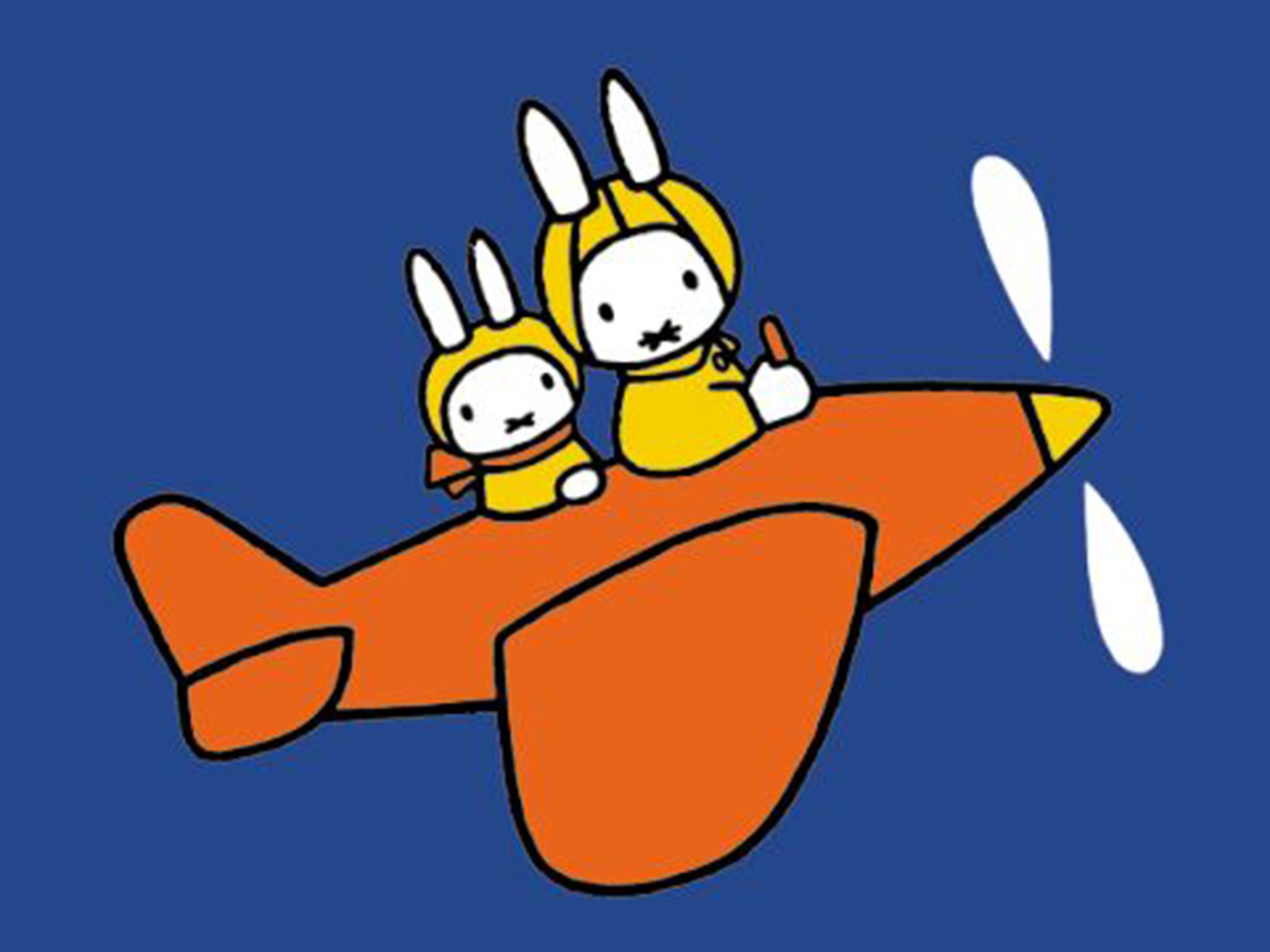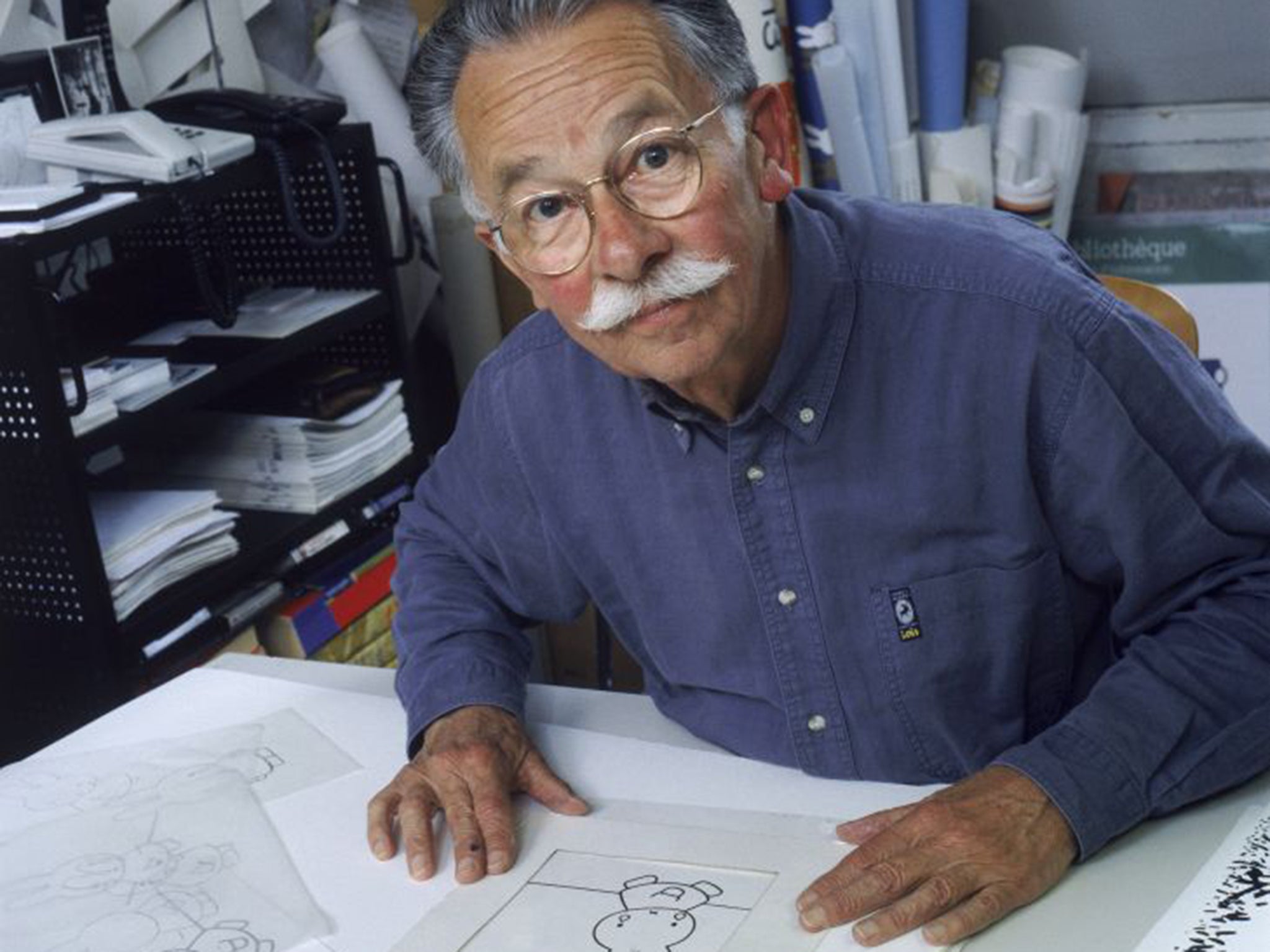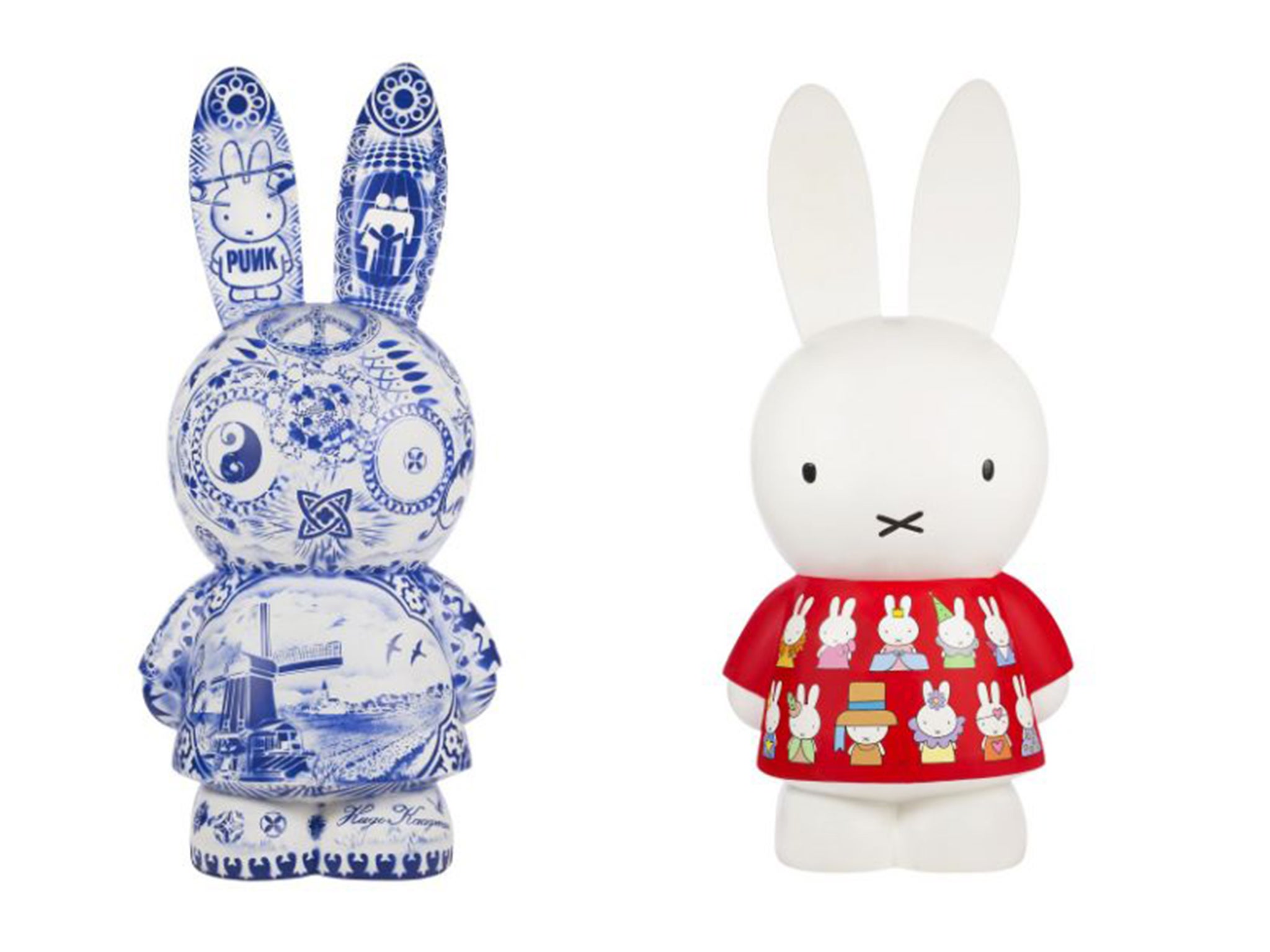Thought Miffy was a cute kids' bunny? At 60, it seems, she's a Modernist masterpiece...
To celebrate Miffy the rabbit's 60th birthday, 45 artists have made statues of the popular children's character. It's a fitting tribute to her creator's love of fine art, says Nell Frizzell

A flat blue background, a thick black line, a simple orange triangle and a cross across her mouth: Dutchman Dick Bruna's original Miffy drawing is as silent, still and flat as an Amsterdam canal. She is a masterclass in minimalism and as enigmatic as Buster Keaton. And yet Dick Bruna's little white rabbit has adventured and endured for 60 years.
To celebrate the 60th anniversary of Bruna's most famous creation, a parade of statues created by 45 artists is going on show this year in Amsterdam, Utrecht, The Hague and Valkenburg aan de Geul, as well as a touring exhibition of 15 statues in Japan, where Miffy has long been partnered by that other icon of cartoon simplicity Hello Kitty. One of the artists included in the show, fashion illustrator Piet Paris, describes Miffy as "almost Zen-like" in its simplicity. "Dick Bruna is a hero for me," Paris says. "As a small boy Bruna was all over the place. It was part of my education. I've always been inspired by the way he deals with free space. He makes things look easy; I like to think I try to achieve the same thing. To make shapes as easy as possible for the eye."
For his statue, De feestjurk, or The Party Dress, Paris has dressed Miffy in a simple orange robe covered in alternative outfits. "It all started because I had a look at Miffy's wardrobe and she only had one dress," Paris says over the phone from the Netherlands. "I felt sorry for her – here she is celebrating her 60th birthday and she doesn't even have a party dress. Every girl needs a party dress – actually, every girl needs lots of party dresses. I like the Madame de Pompadour outfit. And there's a pink off-the-shoulder dress with a big ruffle that's inspired by Lanvin. I wanted to show a sophisticated Miffy."

Sophisticated isn't, perhaps, a word closely associated with Miffy. And yet this stripped-back rabbit, who features in 124 picture books by Bruna, was certainly influenced by some very sophisticated art movements. The Miffy illustrations are composed like Modernist paintings – a central image, surrounded by block colour. Think Saul Bass but with a holidaying rabbit, rather than the anatomy of a murder. Bruna's thick black lines and blocks of flat colour are also, often, compared to the De Stijl school, epitomised by Mondrian and Vilmos Huszar, while the Miffy at the Gallery book makes direct comparison to Bruna's other artistic hero, Henri Matisse.

Of course, Bruna wasn't the only artist to apply these high-art concepts to children's illustration. From Paul Rand's Sparkle and Spin to Charles M Schulz's Peanuts series, the mid-century saw a host of simple, graphical images crossing over from gallery walls to kids' bedroom floors. Fussy Victorian fairies and ornate pastoral scenes gave way to thick lines, primary colours and spartan backgrounds. We went from Alice's Adventures in Wonderland to The Moomins in less than 80 years.
Hugo Kaagman's statue for the Miffy parade, Blue Miffy, is a world away from the simple tricolour imagery of Bruna's books. This Delft-blue creation includes a yin and yang eye, elaborate geometric patterns, various religious symbols and, on the right ear, a punk Miffy complete with safety-pin piercing. "Everybody thinks it's naive and for children," Kaagman says. "So it's fun to put some new, interesting ideas on it. About religion and national identity and things." Kaagman, who became famous for drawing huge graffiti patterns around Amsterdam during the late 1970s, has covered his 2m-high statue in intricate stencilled illustrations, like a Ming vase. "I took the whole thing as a canvas," Kaagman says. "My way of working is to make a collage of small things, influenced by the ornaments and patterns of the African and Arab world. Also, when I made a picture on the street and left any white space, that space would get filled by someone else. So I fill it in first."

But perhaps this dangerous, punk aesthetic isn't such an unlikely bedfellow for Miffy. For, as Kaagman says, the Dutch rabbit that inspired Bruna's original sketch can be a dangerous thing. "Bruna first drew Miffy for his grandson from watching rabbits on the sand dunes. The dunes around the coast were full of rabbits when I was young. But because those sand dunes are below sea level, if there are too many rabbits digging, the water will come back through."
A small fluffy creature with the power to move oceans? After 60 years of international fame, perhaps Miffy is a more powerful figure than we imagined.
Join our commenting forum
Join thought-provoking conversations, follow other Independent readers and see their replies
Comments